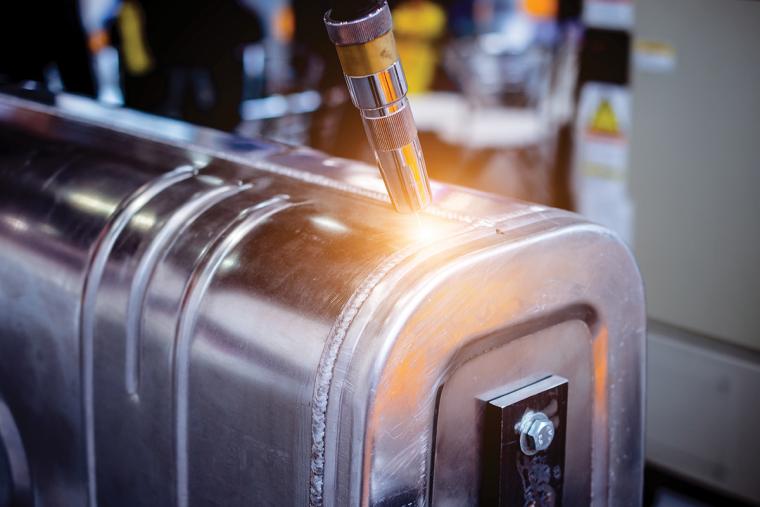
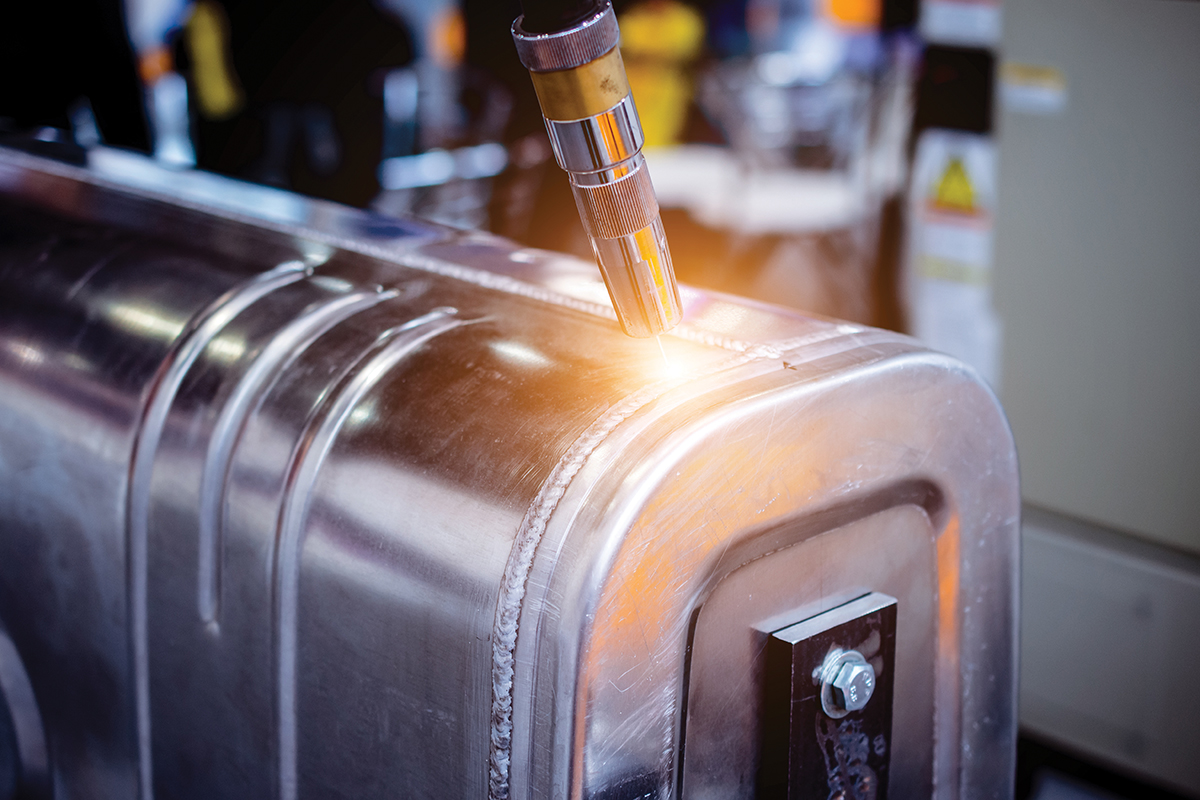 Few industries define American manufacturing as ubiquitously as metalworking. Whereas not too long ago it conjured up images of a shop floor welder bent over a wild spray of fire, metalworking is now more readily identified by a neat and tidy assembly floor filled with sparkly clean parts rolling in soldier-like fashion as robotic arms nip, tuck and zip them into finished form.
Few industries define American manufacturing as ubiquitously as metalworking. Whereas not too long ago it conjured up images of a shop floor welder bent over a wild spray of fire, metalworking is now more readily identified by a neat and tidy assembly floor filled with sparkly clean parts rolling in soldier-like fashion as robotic arms nip, tuck and zip them into finished form.
Metalworking gained modern notoriety in the U.S. in the late 18th century with the advent of the Industrial Revolution. Instead of items being produced by hand, manufacturers created ways to have machines produce them. This profound change in production had a dramatic effect on the quality and quantity of output, serving as a boon to some of America’s most prosperous industries, including automotive, aerospace, electronics and machinery.
Ever since the first Model A rolled off Ford Motor Company’s production line in Detroit in 1908, automotive has been one of the most lucrative sectors for American metal manufacturers. Practically every part of a car in its earliest days was made of some type of metal, and suppliers eager to meet the demands of this burgeoning industry opened shop as close as possible to Ford. The popularity of the automobile led to the birth of other car makers, all of which established roots in Detroit, Flint and Toledo, Ohio, to take advantage of its uniquely skilled workforce and its established industrial supply chain. Steelmaking took rise around Chicago, Cleveland and Youngstown, and tire manufacturing in Akron. These major industries supported a diverse range of metalworking trades and machine-tool firms, particularly in Detroit, Dayton and Columbus.
This “heavy metal” cluster in America’s East-North Central region became known as the “Manufacturing Belt.”
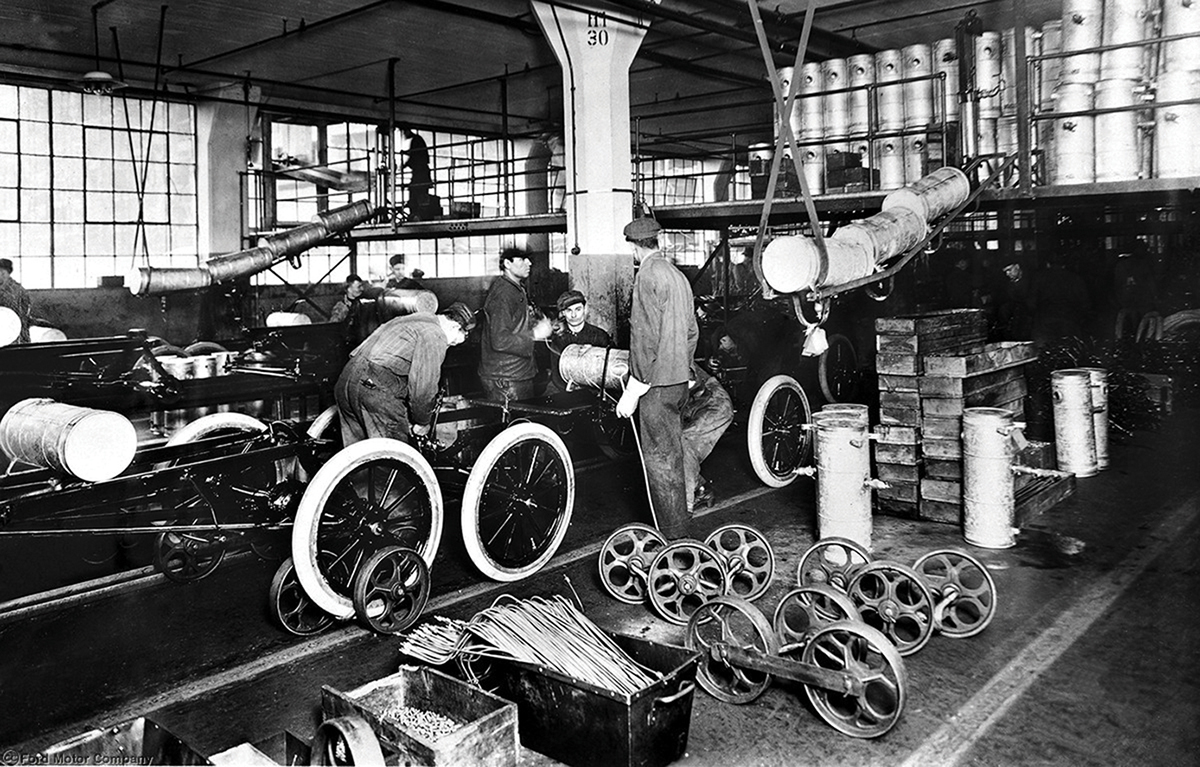
According to Lee Ohanian, a professor of economics at UCLA and a Senior Fellow at the Hoover Institution at Stanford University, the chief reasons for the decline of was “lack of competition pressure in markets and labor,” which produced a lackadaisical attitude toward innovation. In response, corporations established new facilities in the South and West. The car tire firms, for instance, added new southern factories between 1945 and 1962 so that the main growth in their Detroit and Akron operations came in research, marketing and administration. From the 1970s the crisis in American heavy industry, especially automobiles, fell most heavily on the older factories of the Manufacturing Belt, which then was coined the “Rust Belt.”
During this decades-long geographic migration, a far more disruptive change was taking place in metalworking that touched every manufacturing industry: the advent of the CNC machine. Developed in the 1950s, the CNC is an automated method of transforming a stock piece of material such as a block of steel to produce a finished product by means of a controlled material removal process. The ability to program computer devices to control machine tools rapidly advances shop productivity by automating the highly technical and labor-intensive processes. Automated cuts improve both the speed and the accuracy with which prototype parts can be created, especially when the material is critical, such as the case with polypropylene.
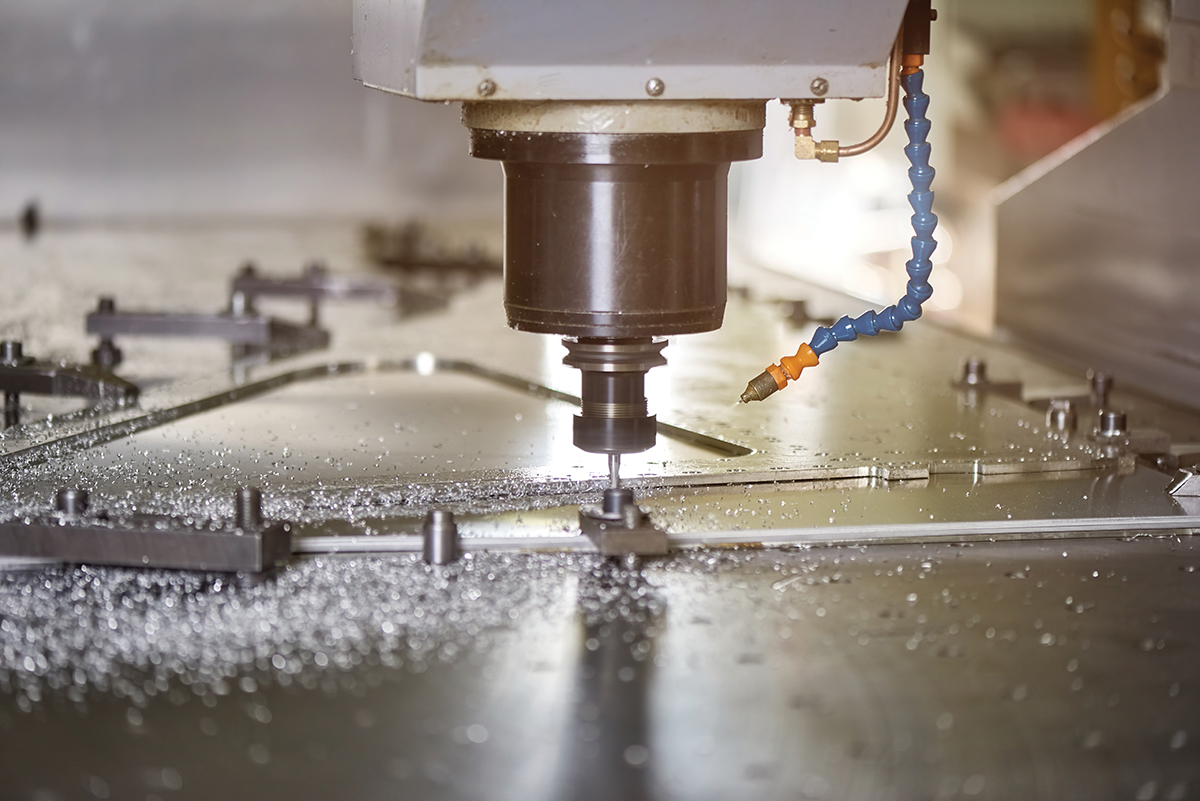
With automation, the race was on to make cars, planes, bridges, electronics – and the machine parts needed to manufacture and assemble them – faster, better and more cost-efficiently. While CNC machining may have been the secret sauce, the key ingredient was people who knew how to program, operate and fix the computers, which were now a dominant part of factory floors. CNC machines, which gave rise to robotics and other computerized production tools, created a dramatic shift in labor and skillset needs. Fewer production workers were required, and those that were needed to use more of their brains and less of their hands. More than ever, companies were investing in on- and off-the-job training and education for their workers. It was no longer enough to know how to assemble one part of a finished product. Workers needed to understand the full assembly processes and how to program and operate the machines that automated them. More so, when those machines broke down, companies needed to have workers on hand to fix them and minimize production downtime.
It is estimated that approximately 50 percent of the American manufacturing jobs lost between 2001 and 2013 were due to automation. Of course, the Great Recession also took place in the latter half of that period, owing to an almost audible screeching of the brakes in global manufacturing (and most other industries). At the start of the Great Recession (December 2007), there were 450,700 people employed in the primary metals industry. By the time it ended in August 2010, there were 366,500, but the industry has never returned to its former employment glory. In mid 2012, U.S. employment in the metals industry had climbed back to 406,900, but has been on a gradual downward slope ever since.2
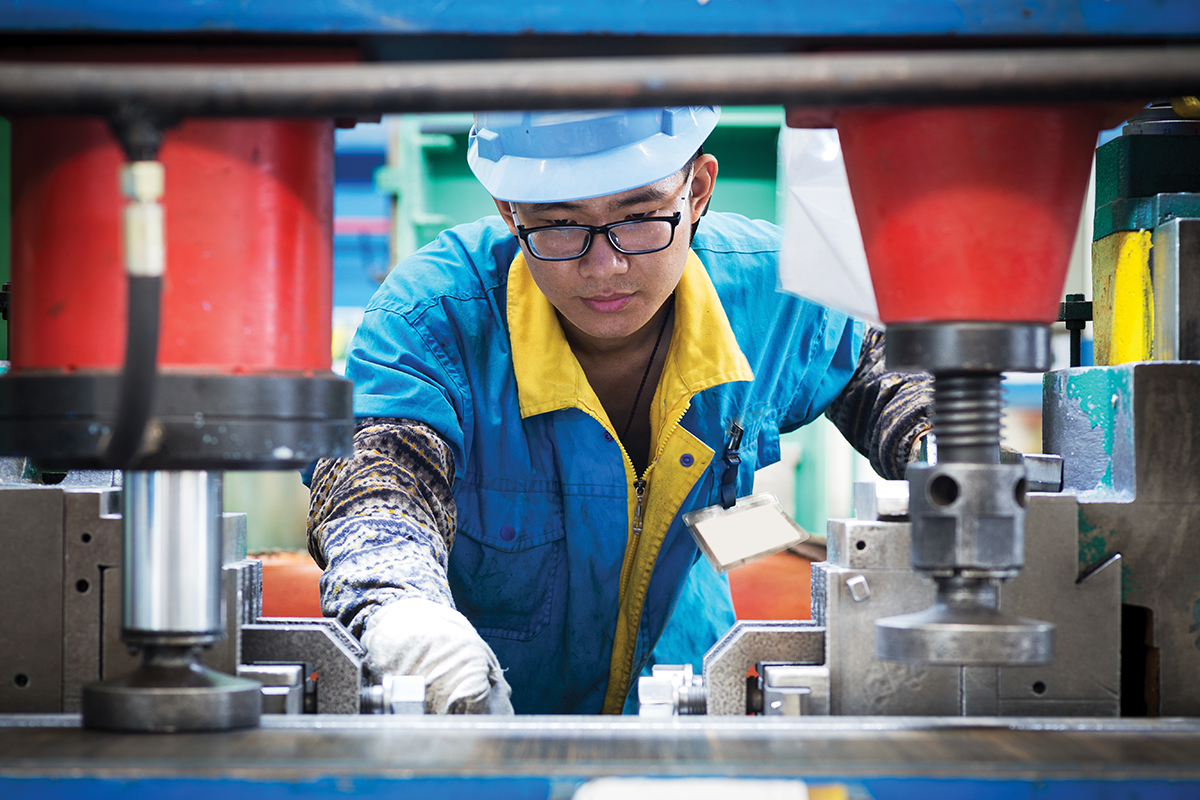 Much of the reason for lower employment is due to offshoring, a manufacturing trend that exploded around the turn of the 21st century. Low wages – particularly in China – allowed American manufacturers to produce far more for far less money, putting more money in their pockets. The loser in this scenario, as well all know now, was quality. Cheaply made Chinese products led to consumer dissatisfaction (not to mention a host of environmental and labor standard red alerts), which caused manufacturers to reconsider their production and outsourcing strategies. Many say there is now a reshoring trend taking place, bringing manufacturers – and their metal suppliers – back to America. However, a major research project called “The Global Supply Chain Benchmarking Study” led by The Wharton School’s professor of operations and information management Morris Cohen and his colleague Hau L. Lee at Stanford University, debunks this theory and shows the reality is more complicated. Their research shows there is actually little reshoring on a net basis in the U.S., while supply chain movements are crisscrossing more than ever. Even within the same company, one department might be outsourcing while another is reshoring.
Much of the reason for lower employment is due to offshoring, a manufacturing trend that exploded around the turn of the 21st century. Low wages – particularly in China – allowed American manufacturers to produce far more for far less money, putting more money in their pockets. The loser in this scenario, as well all know now, was quality. Cheaply made Chinese products led to consumer dissatisfaction (not to mention a host of environmental and labor standard red alerts), which caused manufacturers to reconsider their production and outsourcing strategies. Many say there is now a reshoring trend taking place, bringing manufacturers – and their metal suppliers – back to America. However, a major research project called “The Global Supply Chain Benchmarking Study” led by The Wharton School’s professor of operations and information management Morris Cohen and his colleague Hau L. Lee at Stanford University, debunks this theory and shows the reality is more complicated. Their research shows there is actually little reshoring on a net basis in the U.S., while supply chain movements are crisscrossing more than ever. Even within the same company, one department might be outsourcing while another is reshoring.
“Companies are addressing the question of how and where to produce products, and they’re opening factories, they’re closing factories, they’re shifting employment,” said Cohen. “So, there’s just been a lot of change going on.”
He also said that change is not in one direction.
“Not everybody is reshoring back to the U.S. or to Europe. Not everybody is offshoring again to Asia or to China — South America, Eastern Europe — every part of the world is engaged. We see companies making a range of decisions for what seems to be a variety of reasons. So there’s a lot of change, but it’s a very complicated picture. We need to understand where it’s happening and why it’s happening.”3
The “change” noted in Cohen and Lee’s study on manufacturing points to a broader theme of not predicting the future of America’s metalworking industry on any single factor like employment. As noted earlier, while the Bureau of Labor Statistics cites an increasingly lower volume of workers, it shows a substantial increase in labor productivity. Between 2006 and 2016, productivity increased 23 percent (92.5 vs. 113.8), and an article from Machine Design states that since the worst of the Great Recession in 2009, U.S. manufacturing output has increased more than 20 percent.4 5
 Future Trends in Metalworking
Future Trends in Metalworking
Bill Obras, vice president of sales and marketing at Rego-Fix Tool Corp. in Indianapolis, said, “In general terms, the industry will experience two key trends during the next five years — an acute need for skilled/trained labor and increased global competitiveness in terms of pricing. In turn, these trends will continue to drive the industry towards more machining automation, including such tasks as tool assembly and setup, tool life monitoring, automatic cutting parameter adjustments, in-process part inspection and real-time part-to-part corrections.”6
Another key trend that will have a profound influence on machine tooling is the growth of Industry 4.0, or the Internet of Things (IoT). Sensors are becoming smaller and easier to install in all kinds of products and smart tooling and workholding will provide real-time feedback about problems such as vibration back to the machine control and send alerts to an engineer that adjustments need to be made. Smart factories will require all equipment and tooling to be Industry 4.0 capable.7
Reliance on electricity will increase and tighter environmental regulations will continue to push metalworking firms to locate closer to the OEMs they supply. This, too, will aid in the pricing arena as transportation costs are minimized.
From a geographic perspective, the Southeast will be the predominant HQ for metalworking over the next 10 to 15 years. Wherever new infrastructure is implemented, metalworking follows and for the foreseeable future in America, that region is predominantly the Southeast.
Construction of roads, bridges, power plants, utility lines, buildings and more is currently booming in the Southeast in answer to — and anticipation of — explosive growth. Nearly every major automotive brand now has a plant located in the Southeast and “like-minded” industries such as aerospace have followed suit. This is due in part to the region’s friendly business climate and lack of organized labor.
The region’s former textile roots helped establish a strong network of technical colleges that now offer degrees in a variety of advanced manufacturing technologies critical for metalworking, but much more is needed in the field of education and training. While technical and community colleges are working with companies to offer the necessary training for CNC machining and other technologies, they aren’t producing a large enough volume of qualified workers. Efforts are underway in the South and elsewhere to overhaul an “agriculturally oriented” education system into one focused on STEM education starting at pre-school ages. Only then can we expect teenagers to be prepared to make appropriate career decisions, and capable of handling the academic rigors required of them, that allow them to succeed and give employers plenty of qualified job candidates from which to choose.
As metalworking manufacturers and suppliers look for growth opportunities, they will be wise to seek the advice of site selection professionals who have their pulse on regional industry clusters. Identifying pockets of need and transferrable skills can point companies toward new streams of revenue with less competition, and quicken the process of finding the right location. T&ID
1https://www.minneapolisfed.org/research/economic-policy-papers/competition-and-the-decline-of-the-rust-belt
2Bureau of Labor Statistics: https://data.bls.gov/timeseries/CES3133100001?amp%253bdata_tool=XGtable&output_view=data&include_graphs=true
3http://knowledge.wharton.upenn.edu/article/offshoring-gets-a-rethink/
4Bureau of Labor Annual index of labor productivity for NAICS 331, primary metal manufacturing
https://data.bls.gov/timeseries/IPUEN331___L000?amp%253bdata_tool=XGtable&output_view=data&include_graphs=true
5http://www.machinedesign.com/industrial-automation/reshoring-boost-american-manufacturing
6http://advancedmanufacturing.org/future-metalworking-industry/
7http://advancedmanufacturing.org/future-metalworking-industry/. Jack Burley, vice president of sales and engineering, BIG Kaiser Precision Tooling Inc., as quoted in an article titled “The Future of the Metalworking Industry,” May 2, 2017.

